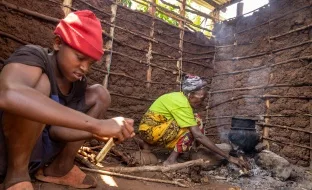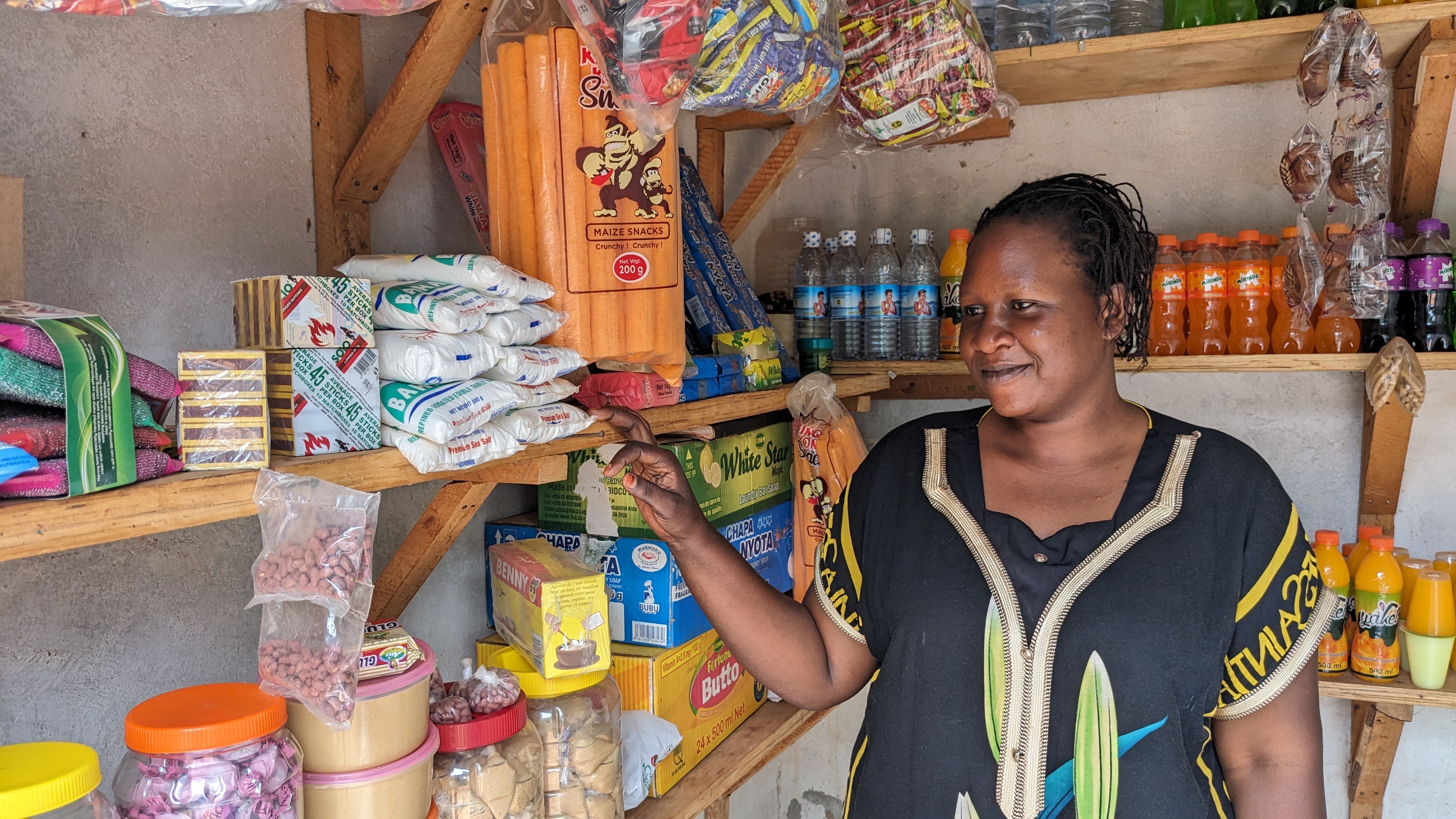For families fleeing conflict or crisis, the world is short on solutions. In the past decade, relief organizations have been forced to make steep cuts to rations provided due to budget constraints, while wealthy countries have welcomed fewer than 1% of refugees. For the 33M refugees unable to return home, building a new life in their host country can be nearly impossible.
Giving families a large cash transfer can provide pathways to self-reliance. A recent study of our work in Uganda’s rural Kiryandongo refugee settlement showed families were more likely to have grown assets, increased incomes, and own a business two years after receiving a $1,000 transfer.
But can the same work for refugees living in cities? GiveDirectly piloted programs in Nairobi and Kampala to test the feasibility of delivering cash to refugees dispersed in urban settings and the impact it has on their lives. Below, we share the promising findings and what we’re doing next.
Refugees spend cash on businesses and improve their financial stability
The majority of refugees live in urban areas rather than rural settlements or camps because cities let them live autonomously, earn money, and move freely. However, city life exposes them to greater risks of exploitation and shocks, such as COVID-19. They also face legal and practical barriers to taking advantage of economic opportunities and receive less aid than those refugees living in settlement camps.
In the past year, we provided ~$1,000 unconditional payments to 2,320 refugee families (1,180 in Nairobi, Kenya and 1,140 in Kampala, Uganda). No central agency tracks the exact location and need of refugees in cities to the degree they do in camps, so we worked with multiple partners to build lists of participants. In total, they hailed from 9 different countries across sub-Saharan Africa, where they’d fled violence or unrest to start new lives in these cities.
Surveying after payment found recipients used their money to:
- Grow businesses: In Kampala, 52% of recipients spent part of their transfers on an existing business and 35% spent on a new business. In Nairobi, 73% spent on an existing business and 20% spent on a new business.
- Repay loans: In Kampala, 59% of the recipients spent part of their transfers on debt repayment. In Nairobi, 11% spent on debt repayment.
- Feed their families: In Kampala, 87% of the recipients spent part of their transfers on food. In Nairobi, 78% spent on food.
In both programs, families reported improved income, and school attendance for children. Diving deeper into Kampala, we found:
- Housing security tripled – 40% of recipients say they’re able to pay rent without difficulties 6 months post the transfers (versus 13% at baseline).
- Food security tripled – 75% reported that their families were able to eat 2-3 full meals in the preceding day (versus 26% at baseline).
- Healthcare access doubled – 74% reported receiving some or all of the healthcare they needed (versus 37% at baseline) 6 months post the transfers.
In Nairobi, refugees struggle to participate in the formal economy because of stricter regulations around opening mobile money or conventional bank accounts. There, we disbursed cash through Equity Bank – one of the few Kenyan banks to offer limited financial services to refugees – opening new accounts for 880 previously unbanked refugees. Half of recipients reported earning more than before receiving transfers (on average, 88% more), which is money they can now securely manage and save with access to these new financial services.
If some refugees can move off assistance, more can be helped
The findings of these pilots show large cash transfers help urban refugees build sustained independence and integration into the local economy. Taken together with the proven impact for refugees in settlements, this makes for a compelling case that large cash transfers can be used to graduate long-term refugees off humanitarian assistance. We cannot expect all refugees who receive a one-time transfer of ~$1000 to become self-reliant; but if many do, we’ll have reduced the caseload of aid organizations, freeing up resources for new emergency responses and increased support to the most vulnerable.
Not enough bilateral and multilateral funders and governments of host countries yet understand this intervention’s replicability, sustainability, broader economic benefit, and its relative cost-effectiveness. As GiveDirectly scales our own programs to reach more refugees, including in new geographies, we’ll also work to further convince humanitarian and development organizations that large cash transfers are a feasible, durable means to addressing the global refugee crisis.

